Tillandsia Repton Fractal
Click thumbnails for full size, scaled to a new window.
Tillandsia Repton Fractal
Formerly on this site as "appenii Hybrid". Registered 03/19.
appenii x ?. Mature open rosette to 90cm. diameter. Dense, arching, long-tapering, finely-frosted, emerald green leaves to 50 cm. long. Erect Inflorescence to over 1 metre tall with dense branching of thin spikes with peachy-red bracts and small, mauve flowers. Peter Tristram N.S.W.
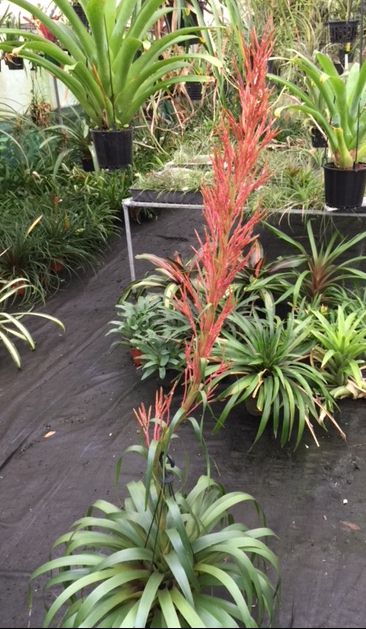
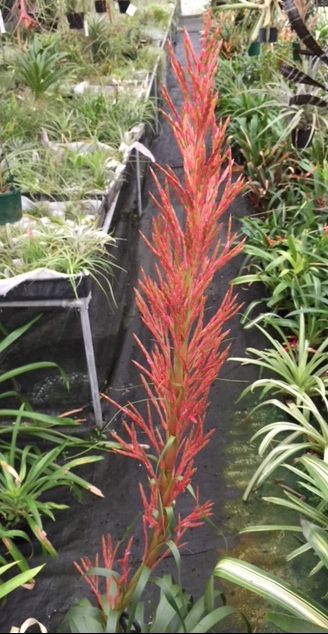
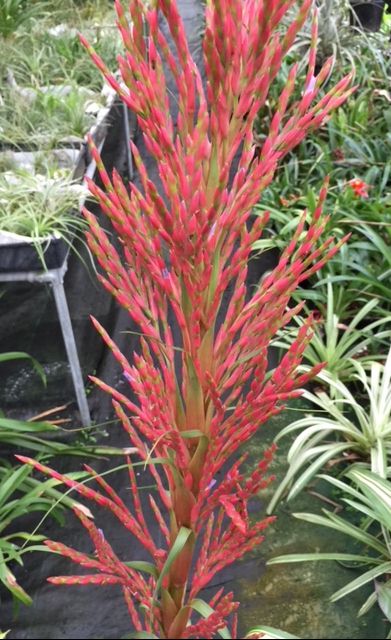
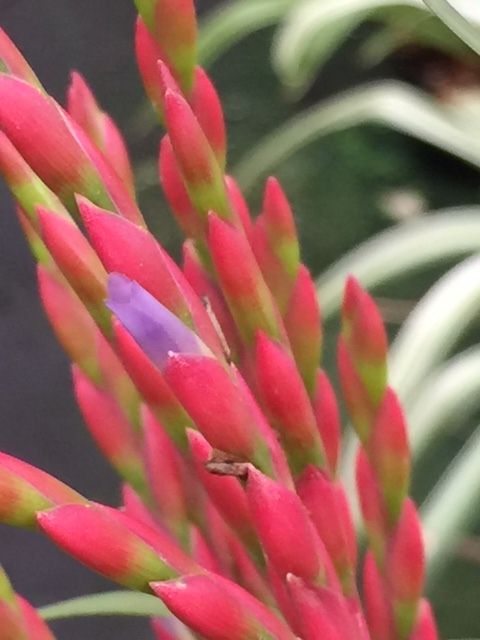 Peter Tristram 04/18 ... "It appears that Barry Genn and I could be able to claim to be the first Tillandsia freaks to bloom TV hybrids. Barry’s was posted a little while back and has been registered as T. Kylie Maree, with T. deppeana confirmed as the pollen donor. My appenii hybrid/s have unknown donors - I do remember using various pollen sources and there is a fair variety of rosette forms in the batch. It’s far too long ago though that I wrote the label to remember the culprits. It eventually disintegrated on the mount. One might have been T. guatemalensis. It wasn’t until I decided to pot the seedlings that they took off so 90% of their growth was in the last few years. Any suggestions as to what the pollen might have come from are welcome."
Peter Tristram 04/18 ... "It appears that Barry Genn and I could be able to claim to be the first Tillandsia freaks to bloom TV hybrids. Barry’s was posted a little while back and has been registered as T. Kylie Maree, with T. deppeana confirmed as the pollen donor. My appenii hybrid/s have unknown donors - I do remember using various pollen sources and there is a fair variety of rosette forms in the batch. It’s far too long ago though that I wrote the label to remember the culprits. It eventually disintegrated on the mount. One might have been T. guatemalensis. It wasn’t until I decided to pot the seedlings that they took off so 90% of their growth was in the last few years. Any suggestions as to what the pollen might have come from are welcome."
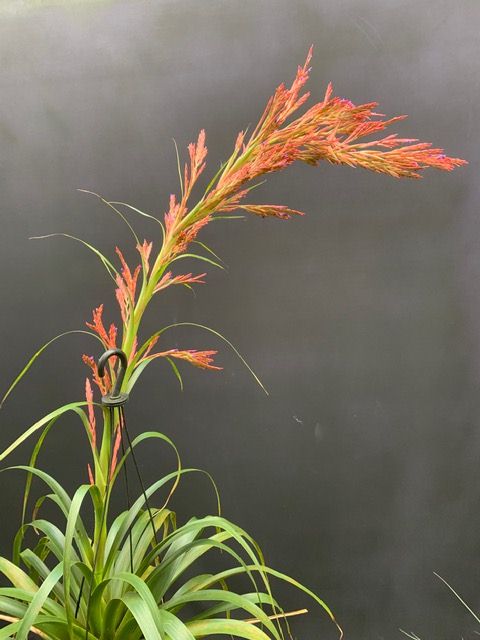
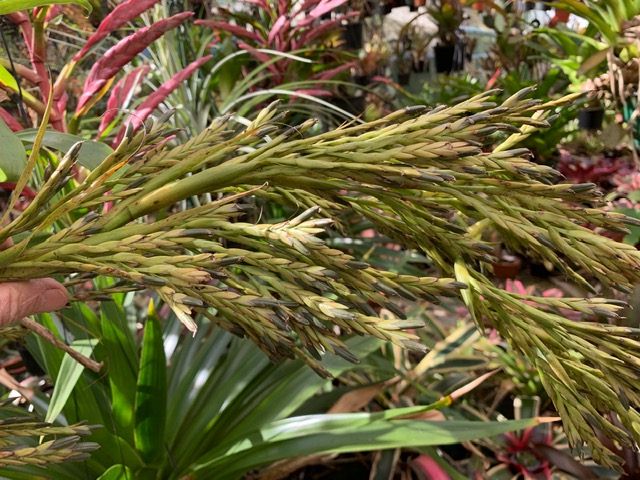 Peter Tristram 01/20 ... "Over the years I’ve found that hybrids, from self sterile parents, can sometimes self-pollinate, not just in Tillandsia either, producing viable seed. Usually it’s with closely related parents, so I wonder why about 5 clones of my hybrid, T. Repton Fractal, blooming for the first time, all set dozens of pods with seemingly healthy looking seed. The mother was TV appenii and the father unknown but something ‘green‘ and possibly T. guatemalensis. I expect I’ll get a bag full of weirdo seed."
Peter Tristram 01/20 ... "Over the years I’ve found that hybrids, from self sterile parents, can sometimes self-pollinate, not just in Tillandsia either, producing viable seed. Usually it’s with closely related parents, so I wonder why about 5 clones of my hybrid, T. Repton Fractal, blooming for the first time, all set dozens of pods with seemingly healthy looking seed. The mother was TV appenii and the father unknown but something ‘green‘ and possibly T. guatemalensis. I expect I’ll get a bag full of weirdo seed."
Rob Bower ... "If you google mechanisms of self-incompatability in plants you find lots of references and the mechanisms are quite well understood. Basically the stigma in the seed parent has a system that can recognise whether the pollen landing on it is ‘self’ or not. If it is seen as ‘self’ it starts up a ‘kill pollen tube’ mechanism – and no seed occurs. Probably if a hybrid is made it has a mix of the ‘self’ detection systems from the two parents and also the pollen has a mix of the ‘look‘ of the two parents. So sometimes the detection systems in the hybrid will recognise pollen during a selfing cross – but not always.
Why you get more chance of seed from closely related parents given the above mechanisms I don’t know. But since the anti-selfing mechanisms are so well developed its clear that some species really need to outcross."
Peter Tristram ... "There are also discussions I remember of methods of tricking the plant to self, such as introducing pollen to some flowers and the plant then might accept its own pollen. This seems to happen with some Bromeloideae that are normally self sterile species. Mind you, I’ve not used controlled conditions to prove this! Lots of pollinators frequent my blooming plants, not just me!
Here’s an example: Tillandsia relative, Quesnelia alvimii, known only from one clone in cultivation and self sterile in everyone’s experience that I know of. Lots of untagged seed pods developed and there was no evidence of bird pollination like messed up petals and pollen spread around. Pods were chokkas too. Time will tell if it selfed.
Bob Hudson always mentions the position of the stigma with regard to self sterile and self fertile plants. Lots of Tillandsia subg. Tillandsia species (and hybrids) seem to have flowers where the anthers and stigma begin in close proximity then the stigma elongates way past the pollen-bearing anthers, maybe to avoid self pollination, or because no self pollination occurred??
I suspect it’s a complicated set of chemistry involved with many possible processes driven by many factors."
Updated 19/06/20





